WATCH: The latest UK weather forecastpublished at 05:55 BST 12 August 2022
Elizabeth Rizzini has a look at the weather to expect for Friday and Saturday
A drought is officially declared in eight areas of southern, central and eastern England - including Devon and Cornwall, Kent, London and the East Midlands
It means water companies can begin announcing stricter measures to conserve supplies
Yorkshire Water has announced its first hosepipe ban in 27 years and joins South East, Southern and Welsh Water in enforcing restrictions
A four-day extreme heat amber warning is in place for parts of England and Wales, with temperatures forecast to hit 37C (99F)
The Met Office is also warning there is an "exceptional" risk of fires spreading over the weekend, with some supermarkets removing disposable barbecues from shelves
Meanwhile in France, firefighters continue to fight a huge wildfire in the south-west, while low water levels on the Rhine river in Germany are disrupting shipping
Edited by Alexandra Fouché
Elizabeth Rizzini has a look at the weather to expect for Friday and Saturday
The Met Office's amber extreme heat warning - affecting southern and central England and parts of Wales - lasts until Sunday.
We could see temperatures hitting 37C (99F) in some parts of the country over the next few days.
The warning means vulnerable people's health could be impacted and travel could be disrupted.
This amber alert is the longest the Met Office has issued since it introduced the warning system in 2021.
It's lower than the first-ever red warning in July, when temperatures exceeded 40C for the first time. But this heatwave looks to be lasting longer.
Check the forecast where you are here.
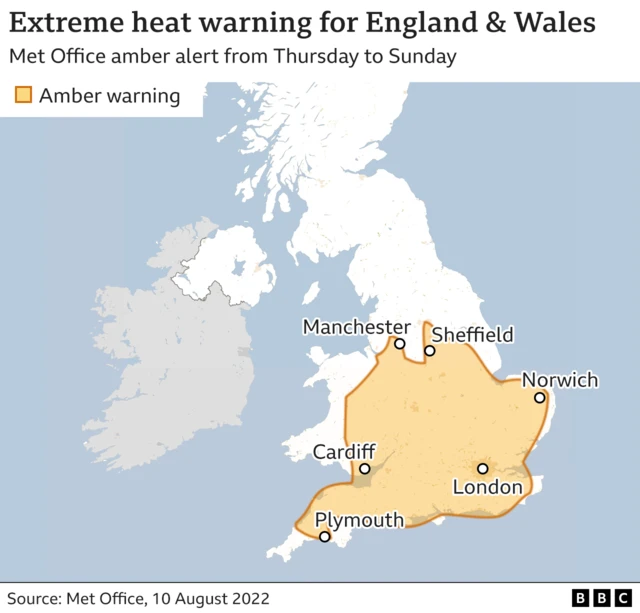
Stunning images show the extent to which water levels have depleted at Cornwall's largest reservoir on Bodmin Moor.
Levels at Colliford Lake are now so low that trees and rocks that are usually submerged have been exposed.
 Image source, PA Media
Image source, PA Media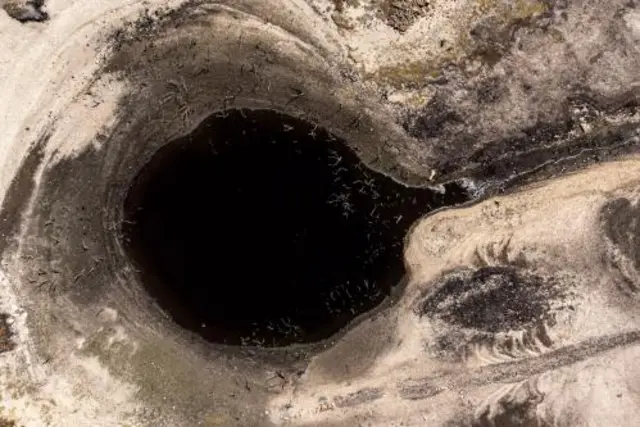 Image source, PA Media
Image source, PA Media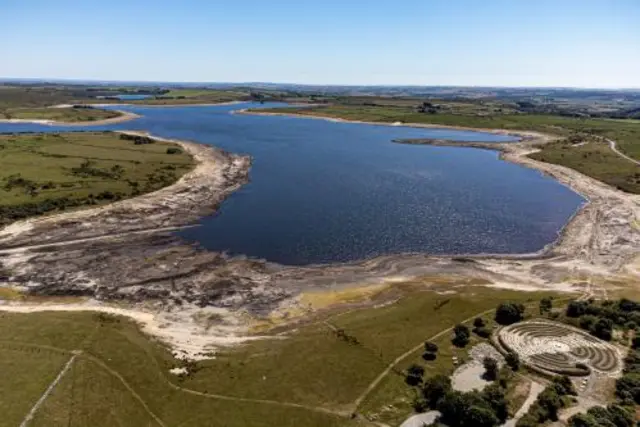 Image source, PA Media
Image source, PA Media Justin Rowlatt
Justin Rowlatt
Climate editor
The government is expected to declare a drought covering many areas of England later today, a number of sources have told BBC News.
The final decision will be made by the Department for Environment, Food and Rural Affairs (Defra) with the Environment Agency later following a meeting of the National Drought Group.
Since late July, the UK has officially been in what is called “prolonged dry weather” - that’s the stage before a drought is declared.
The government has already said if this dry picture continues – and it has certainly done that – then a drought is likely to be declared.
What will determine the decision is the hydrological position across the country – how much water there is around.
Defra and the Environment Agency will be asking the other members of the National Drought Group about rainfall, river flows, groundwater levels, reservoir levels and soil moisture.
They’ll then ask how that is likely to impact the public water supply, how it will affect other people using water like businesses and agriculture and of course they’ll want to know what the impact on the environment is likely to be.
Defra believes there could be serious impacts to some or all of these and will, therefore, declare that parts of the UK are in drought.
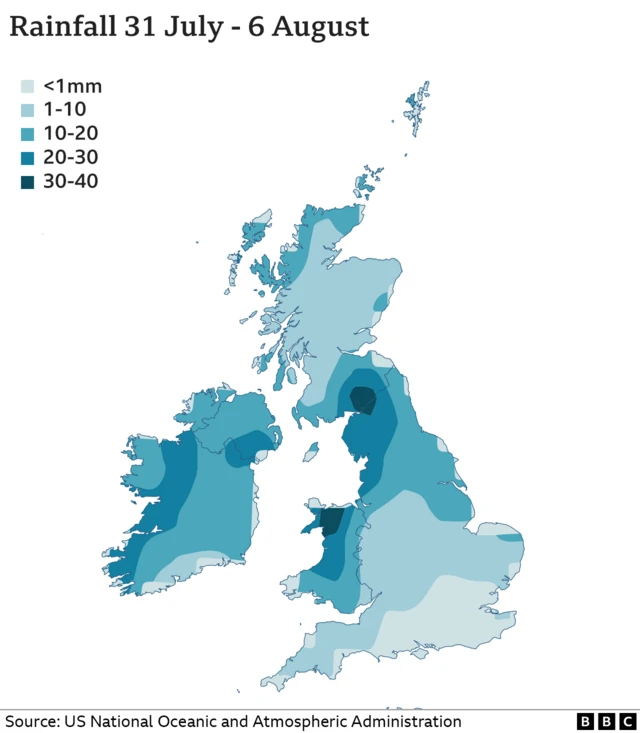 Image source, .
Image source, .Several of Friday's papers carry images of wildfires and parched earth on their front pages.
"Drought alert: new rules on way as climate crisis bites" is the Guardian's main headline.
The newspaper links human-induced climate change and the current scorching temperatures facing the UK.
But it notes: "Scientists said it was highly unlikely that 'extreme' measures of the kind used in 1976 would be needed to deal with the heatwave."
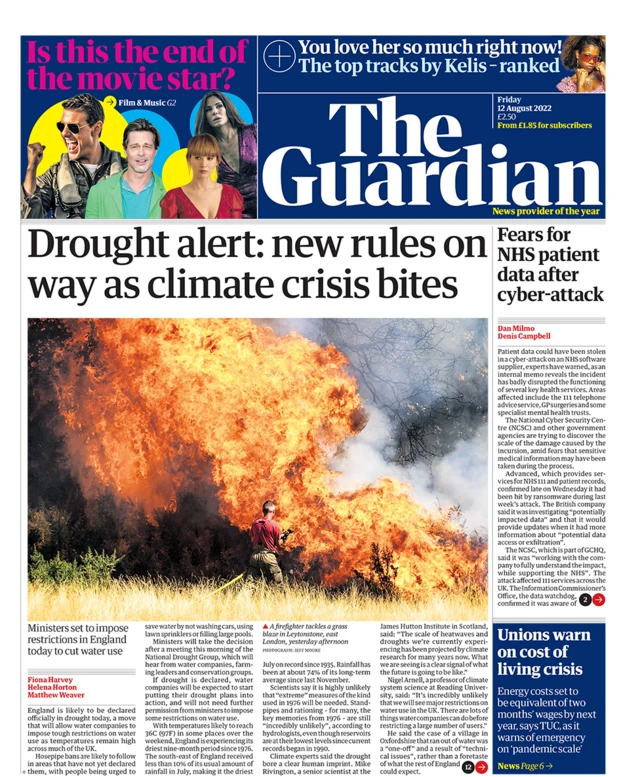 Image source, The Guardian
Image source, The GuardianMeanwhile, the i says the drought "could last months".
The paper says reservoirs have fallen below 60% capacity - with the threat of low rainfall due to last "weeks".
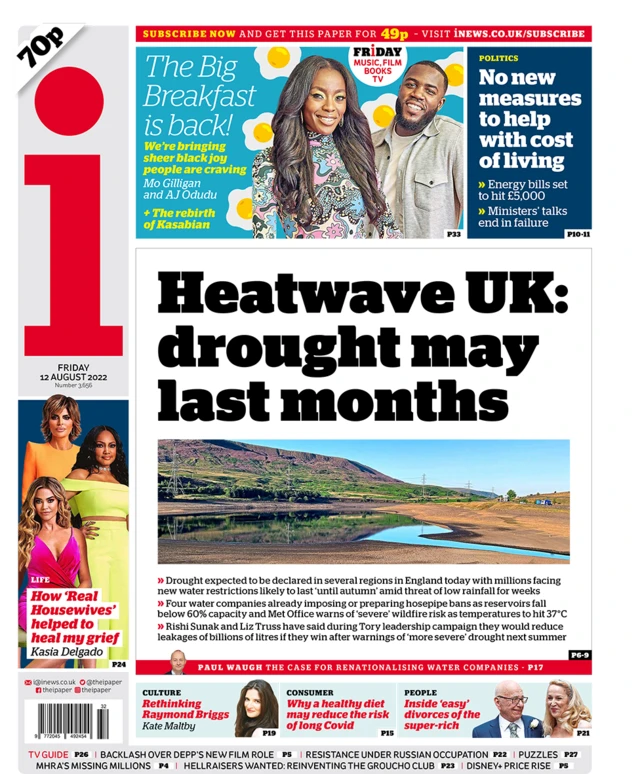 Image source, The i
Image source, The iRead more in our paper review here.
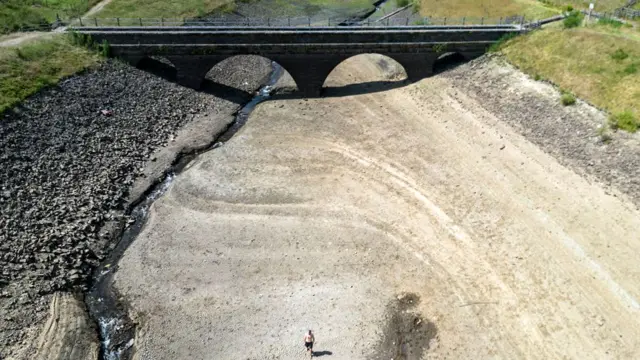 Image source, PA Media
Image source, PA MediaThanks for joining our live coverage of the current UK heatwave, with parts of the country in the midst of a four-day extreme heat warning.
The Met Office’s amber warning applies to southern and central England and parts of Wales, and runs from midnight on Thursday until Sunday. Impacts are possible to health, transport and infrastructure.
Following the driest July in England since 1935, BBC News has been told that an official drought is set to be declared for many areas later.
Follow along here for the latest updates and advice.